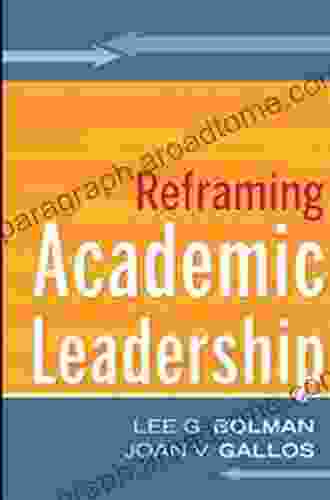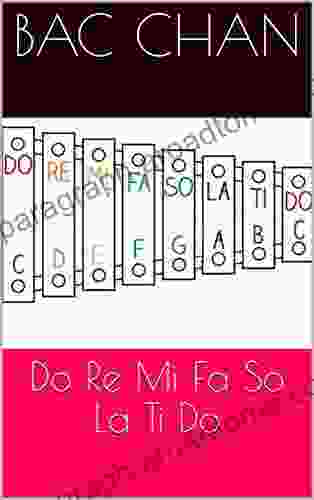Reframing Academic Leadership: A Review of Lee Bolman's Transformative Work

In his groundbreaking book, Reframing Academic Leadership, Lee Bolman argues that traditional models of leadership are no longer effective in today's complex and rapidly changing academic environment. He proposes a new framework for leadership that is based on four frames: the structural frame, the human resource frame, the political frame, and the symbolic frame. Bolman's framework provides a comprehensive and nuanced understanding of leadership that is essential reading for anyone who wants to lead effectively in higher education.
4.5 out of 5
| Language | : | English |
| File size | : | 1108 KB |
| Text-to-Speech | : | Enabled |
| Screen Reader | : | Supported |
| Enhanced typesetting | : | Enabled |
| Word Wise | : | Enabled |
| Print length | : | 395 pages |
| Lending | : | Enabled |
The Structural Frame
The structural frame focuses on the formal structure of the organization. It includes the organizational chart, the division of labor, and the rules and procedures that govern the organization. Bolman argues that the structural frame is important for providing stability and Free Download to the organization. However, he also cautions that too much emphasis on the structural frame can lead to bureaucracy and inflexibility.
Bolman identifies four key elements of the structural frame:
- Goals and objectives: The goals and objectives of the organization provide a sense of direction and purpose. They help to align the efforts of all members of the organization and to ensure that everyone is working towards the same goal.
- Structure: The structure of the organization defines the relationships between different parts of the organization. It determines who reports to whom and how decisions are made.
- Processes: The processes of the organization are the procedures that are used to get work done. They include things like budgeting, planning, and performance evaluation.
- Culture: The culture of the organization is the shared values, beliefs, and norms that shape the way people behave. It influences the way people interact with each other, the way they make decisions, and the way they approach their work.
The Human Resource Frame
The human resource frame focuses on the people who work in the organization. It includes their skills, knowledge, and abilities. Bolman argues that the human resource frame is important for motivating and developing employees. However, he also cautions that too much emphasis on the human resource frame can lead to a lack of accountability and a focus on individual needs over the needs of the organization.
Bolman identifies four key elements of the human resource frame:
- Recruitment and selection: The recruitment and selection process is used to identify and hire the best possible employees. It is important to find employees who have the skills and knowledge necessary to do the job and who fit in with the culture of the organization.
- Training and development: Training and development programs are used to help employees improve their skills and knowledge. They can also be used to help employees learn new skills and knowledge that will allow them to take on new roles and responsibilities.
- Performance evaluation: Performance evaluation is used to assess the performance of employees. It is important to provide employees with regular feedback on their performance so that they can improve and develop.
- Compensation and benefits: Compensation and benefits are used to reward employees for their work. It is important to provide employees with a fair and competitive compensation package that meets their needs and motivates them to perform at their best.
The Political Frame
The political frame focuses on the power relationships within the organization. Bolman argues that the political frame is important for understanding how decisions are made and how resources are allocated. However, he also cautions that too much emphasis on the political frame can lead to conflict and gridlock.
Bolman identifies four key elements of the political frame:
- Power: Power is the ability to influence others. It can be used to get things done, to achieve goals, and to control resources.
- Coalitions: Coalitions are groups of people who come together to achieve a common goal. They can be used to build support for a particular issue or to challenge the status quo.
- Conflict: Conflict is a natural part of organizational life. It can be constructive or destructive, depending on how it is handled.
- Negotiation: Negotiation is a process of reaching an agreement between two or more parties. It can be used to resolve conflicts, to build relationships, and to achieve common goals.
The Symbolic Frame
The symbolic frame focuses on the symbols and rituals that are used to create meaning in the organization. Bolman argues that the symbolic frame is important for creating a sense of identity and belonging. However, he also cautions that too much emphasis on the symbolic frame can lead to a lack of clarity and focus.
Bolman identifies four key elements of the symbolic frame:
- Symbols: Symbols are objects, images, or words that represent something else. They can be used to create a sense of identity and belonging, to communicate values, and to inspire action.
- Rituals: Rituals are repeated actions that have symbolic meaning. They can be used to mark important events, to celebrate achievements, and to reinforce values.
- Myths: Myths are stories that are told to explain the origins of the organization, its values, and its goals. They can be used to create a sense of identity and belonging, to inspire action, and to legitimize the organization's authority.
- Vision: Vision is a shared sense of the future that inspires people to work together towards a common goal. It can be used to create a sense of identity and belonging, to inspire action, and to legitimize the organization's authority.
Bolman's framework for leadership provides a comprehensive and nuanced understanding of leadership that is essential reading for anyone who wants to lead effectively in higher education. It offers a fresh perspective on leadership that is based on the latest research and theory. Bolman's framework is also practical and actionable, and it provides leaders with the tools they need to succeed in a complex and rapidly changing environment.
If you are interested in learning more about Bolman's framework for leadership, I encourage you to read his book, Reframing Academic Leadership. It is a groundbreaking work that will change the way you think about leadership.
4.5 out of 5
| Language | : | English |
| File size | : | 1108 KB |
| Text-to-Speech | : | Enabled |
| Screen Reader | : | Supported |
| Enhanced typesetting | : | Enabled |
| Word Wise | : | Enabled |
| Print length | : | 395 pages |
| Lending | : | Enabled |
Do you want to contribute by writing guest posts on this blog?
Please contact us and send us a resume of previous articles that you have written.
 Book
Book Novel
Novel Page
Page Chapter
Chapter Text
Text Story
Story Genre
Genre Reader
Reader Library
Library Paperback
Paperback E-book
E-book Magazine
Magazine Newspaper
Newspaper Paragraph
Paragraph Sentence
Sentence Bookmark
Bookmark Shelf
Shelf Glossary
Glossary Bibliography
Bibliography Foreword
Foreword Preface
Preface Synopsis
Synopsis Annotation
Annotation Footnote
Footnote Manuscript
Manuscript Scroll
Scroll Codex
Codex Tome
Tome Bestseller
Bestseller Classics
Classics Library card
Library card Narrative
Narrative Biography
Biography Autobiography
Autobiography Memoir
Memoir Reference
Reference Encyclopedia
Encyclopedia Mark Parsons
Mark Parsons Marilyn Abildskov
Marilyn Abildskov Jennifer Keishin Armstrong
Jennifer Keishin Armstrong Jivana Heyman
Jivana Heyman Jennifer Rollin
Jennifer Rollin John Keegan
John Keegan Joan E Grusec
Joan E Grusec Jim Anderson
Jim Anderson Jess Zafarris
Jess Zafarris Jillian Reece
Jillian Reece John Kieschnick
John Kieschnick Jim Piekarski
Jim Piekarski John Barylick
John Barylick William Bolitho
William Bolitho Joe Thomas
Joe Thomas Sam Usher
Sam Usher Todd Eldredge
Todd Eldredge John Adlam
John Adlam Russell Gamblin
Russell Gamblin Jill Godmilow
Jill Godmilow
Light bulbAdvertise smarter! Our strategic ad space ensures maximum exposure. Reserve your spot today!
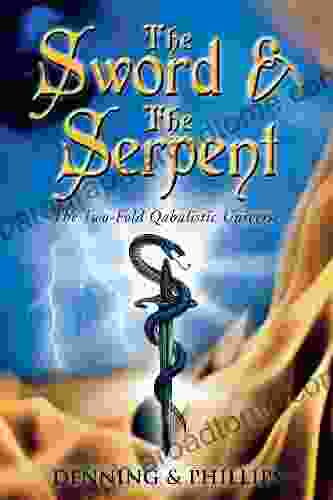
 Tennessee WilliamsThe Two Fold Qabalistic Universe: A Journey into the Hidden Order of...
Tennessee WilliamsThe Two Fold Qabalistic Universe: A Journey into the Hidden Order of... Kyle PowellFollow ·8.2k
Kyle PowellFollow ·8.2k Liam WardFollow ·17.1k
Liam WardFollow ·17.1k Anthony BurgessFollow ·3.9k
Anthony BurgessFollow ·3.9k Mark MitchellFollow ·10k
Mark MitchellFollow ·10k Javier BellFollow ·15.9k
Javier BellFollow ·15.9k Julio Ramón RibeyroFollow ·12k
Julio Ramón RibeyroFollow ·12k Jake CarterFollow ·5.6k
Jake CarterFollow ·5.6k Asher BellFollow ·12.4k
Asher BellFollow ·12.4k

 Julio Cortázar
Julio CortázarAn Illustrated Encyclopedia Of Live Concerts And...
Immerse yourself in the...

 Edgar Cox
Edgar CoxNon Physically Assaultive Attachment Based Chronic Covert...
What is Covert...
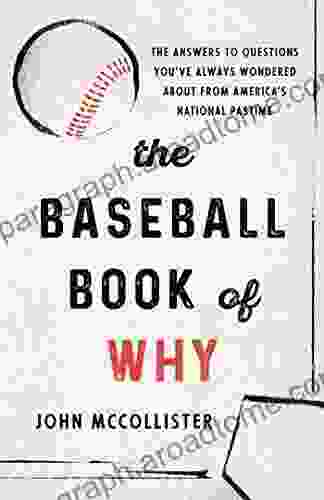
 Robert Reed
Robert ReedThe Baseball of Why: Unraveling the Intricacies of...
Step up to the plate and...

 Aldous Huxley
Aldous HuxleyTacos and Beer: An Atmosphere of Flavorful Delights
In the realm of culinary adventures,...

 Stan Ward
Stan WardUnlock the Secrets of the Aramaic Jesus: Revelations of a...
Journey Back to the Roots of...
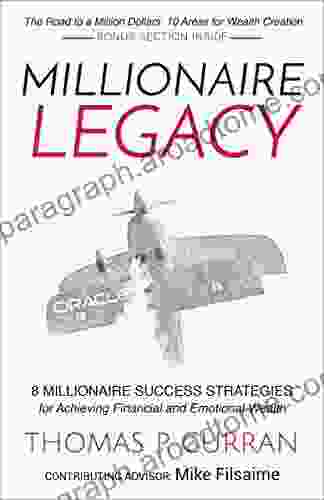
 Vincent Mitchell
Vincent MitchellMillionaire Success Strategies: Your Blueprint for...
Unlock the...
4.5 out of 5
| Language | : | English |
| File size | : | 1108 KB |
| Text-to-Speech | : | Enabled |
| Screen Reader | : | Supported |
| Enhanced typesetting | : | Enabled |
| Word Wise | : | Enabled |
| Print length | : | 395 pages |
| Lending | : | Enabled |


